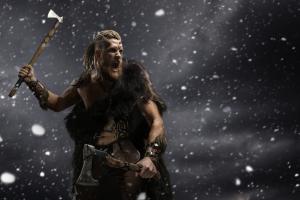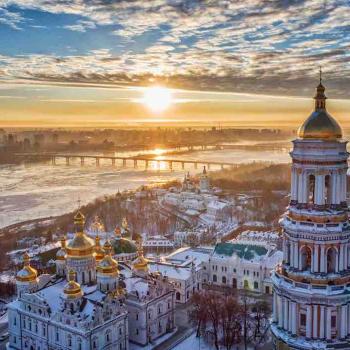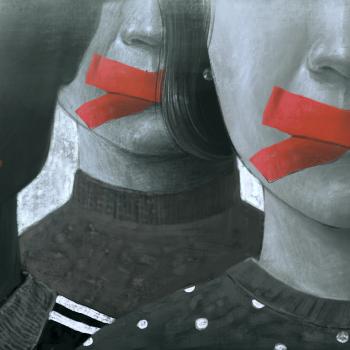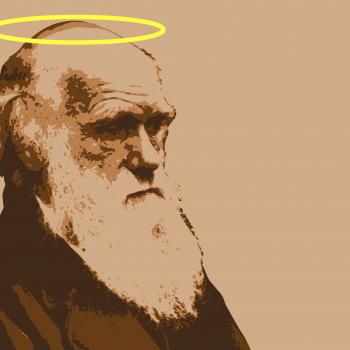On Wednesday, January 6th, 2021, a herd of idiots, conspiracy maniacs, and revolutionary varlets stormed into the United States Capitol and proceeded to occupy it, like Vandals in Rome, for hours. They drove out actual congresspeople of both parties during the middle of proceedings to certify the votes of the Electoral College, injuring dozens of policemen and policewomen in the process. Vice President Pence fled from the Capitol like a raccoon startled from a trash can on a rainy night. Some nimrod (probably more than one) carried a Confederate flag through the Capitol for the first time in history. It was a sad, drunken, pathetic carnival of destruction and violence.
Images from that night will remain burned in the public consciousness for a very long time. Plainclothes Capitol police pointed handguns through the broken door of the Senate chamber as a horde of modern Visigoths pressed to get inside. A female rioter, shot by police, bled out horribly on the marble floor of our citadel of democracy.
One image, though, will stand out above all the others: the so-called QAnon Shaman, a shirtless man wearing a fur hat and horns, standing astride the presider’s dais at the center of the Senate floor, looking for all the world like a barbarian exulting in the ruins of a conquered city.
The QAnon Shaman, whose name turns out to be Jake Angeli, has been a ubiquitous presence at Trump rallies and anti-lockdown protests for some time. He is apparently something like a universal mascot for the snowballing QAnon movement, which centers around the quasi-religious belief that the world is run by a global cabal of superrich, Satan-worshiping pedophiles — and that Donald Trump is the only champion who can defeat them. It’s hard to know where to begin with this pulsing ball of grandiosity and paranoia (the only two subjects in which Trump himself ever excelled), so I won’t even attempt it here.
The Return of the Old Gods
Instead, I want to talk about the symbolism of the Shaman’s tattoos. The QAnon Shaman sports a number of quite striking bits of inkwork on his apparently permanently bare abdomen, which you will have seen in countless photographs in the past few days unless you are currently imprisoned in an underground cave on the moon. The biggest and boldest one is pretty recognizable to anyone who has watched Marvel movies or the (excellent) historical fiction series The Last Kingdom: Thor’s hammer, Mjölnir, upside-down, spreads across Angeli’s lower-left ribcage and stomach.
The second tattoo, which tastefully encircles the Shaman-dude’s left nipple, is Yggdrasil, the Norse Tree of Life. In iconographic form, Yggdrasil often forms a complex ring, its knotwork upper branches bowing down to grasp onto the equally intricate roots that emerge from below. One of the many meanings of the Yggdrasil symbol is the eternal continuance of the living world — birth linked to death and rebirth, much like the Egyptian-Greek Ouroboros, or the snake that eats its own tail.
Finally, above Yggdrasil is an interlinked set of three black triangles. I was not personally familiar with this symbol before last week, but it turns out be the Valknut — yet another Norse/Germanic icon variously associated with Odin or the magical being Hrungnir. It’s also used by some contemporary neo-pagan movements as the “knot of the slain,” a symbol of one’s willingness to die as a warrior for the sacred cause (whatever that cause is).
Many white nationalists and other, similarly unsavory groups exhibit a strong affinity for Norse and Germanic pagan symbols. Disturbingly, the Nazis were entranced with Germanic paganism as well, coopting its chthonic symbols and runes — including the SS symbol, its harsh, jagged contours still instantly recognizable 75 years later — for their own political and crypto-theological agendas.
This is not to say that all modern-day pagans who deck themselves out with Viking paraphernalia are members of the Aryan Brotherhood. In fact, there are deep divisions within American Heathenry — the name Norse neo-pagans use for their movement — on whether their religion should be universally open to all (the “universalist” vision) or restricted to Nordic whites (the “folkish” or racist vision). There is even a group called Heathens Against Hate. However, the BBC journalist Sumit Paul-Choudhury observes that, as Christianity declines in once-Christian lands, interest in other, often explicitly ethnocentric meaning systems is waxing.
In Russia, for example, the growing religion Rodnovery claims to resurrect the practices and beliefs of pre-Christian Slavic paganism. An increasing number of Britons, a group that has declined precipitously from 75% to only around 50% self-identified Christian in only about a decade, are perking up their ears at Druidry, a revamped version of the sacrificial religion of the ancient Celts. And in the U.S., many of today’s black antiracist activists are interested in versions of African religions, such as the Nigerian faith Ifá. Back in 2017, Peter Beinart wrote at the Atlantic that
Patrisse Cullors, one of (Black Lives Matter’s) founders, grew up as a Jehovah’s Witness but says she became alienated by the fact that the elders were “all men.” In a move that faintly echoes the way some in the alt-right have traded Christianity for religious traditions rooted in pagan Europe, Cullors has embraced the Nigerian religion of Ifa. To be sure, her motivations are diametrically opposed to the alt-right’s. Cullors wants a spiritual foundation on which to challenge white, male supremacy; the pagans of the alt-right are looking for a spiritual basis on which to fortify it. But both are seeking religions rooted in racial ancestry and disengaging from Christianity.
Christianism, Meet Odin
Meanwhile, internet conspiracy theories centered on literally absurd claims are mutating into complete, life-encompassing meaning systems. One of these pseudo-religions recently incited a horde of nitwits and goons to commit assault on the holiest shrine of the civic faith of liberal democracy. Instead of becoming the rationalist utopia that the New Atheists of the early 2000s dreamed of, the post-religious era seems instead to be spinning off weird new faiths as promiscuously as a summer glacier spitting calved-off icebergs into briny waters.
What’s interesting is the way that the ostentatious Christianism of the Trump movement comes across as completely untroubled by the co-presence of Norse-Germanic neo-paganism in its own ranks. Last Wednesday, this crypto-syncretism led a truly remarkable, world-historical occurrence.
When the stumbling shock troops of a movement purportedly aimed at desperately preserving a Judeo-Christian culture, whose cult leader is seen by millions of evangelical Christians as God’s chosen instrument of protection against fearsome tides of secularization and cultural change, finally stormed into the Senate chamber of the United States of America, who stood in the center of the floor? Who became the lasting face of their movement?
A man in the headdress of a barbarian, whose very body pays homage to the old gods.
The following day, the conservative Christian commentator Rod Dreher admonished his fellow righties,
I don’t want to hear “whataboutism” from my side. What happened today in Washington was a defilement of the most potent architectural symbol of American democracy. In the Bible, Jesus said, speaking of an approaching apocalypse:
“So when you see standing in the holy place ‘the abomination that causes desolation,’ spoken of through the prophet Daniel—let the reader understand—then let those who are in Judea flee to the mountains.” (Matthew 24:15-16)
He’s talking about the Hebrew Temple. The US Capitol is not a religious building. But from a nationalist point of view, the Capitol is our Temple. And this MAGA idiot in the headdress is an abomination of desolation standing in the holy place.
Dreher does not mean that this neo-pagan yowling in the U.S. Capitol heralds the literal end of the world. But it does mean that the events that are swirling around us in the 2020s are not merely political. They are not simply struggles about policy.
They are about meaning.
Culture, Symbolism, and Meaning
What is meaning? Authors have slaved away on entire treatises about this subject, but one interesting aspect of meaning is that it always references a time beyond the present. Progressive secularism hangs its hopes on a technocratic, equalitarian future. Traditional Christianity looks back to the life of Jesus and forward to a posited future eschaton. Heathenry invokes a mythic Nordic past. The here and now is never quite enough to give the sense of purpose, identity, and belonging that human beings crave.
Another unique characteristic of meaning is that, for human beings, it is always, always, always a cultural thing. We make meaning together, not in isolation. This means that concrete, visible symbols are always pegged to some higher cultural unity, so that when, for example, a Jewish believer hangs a mezuzah — a small scroll containing the most important prayer of the Torah — on her doorframe, the decorative container and the tiny scroll inside have many interlinked meanings for her.
They mean that her home is a Jewish one, that the people who live inside it celebrate Passover, Rosh Hashanah, and Yom Kippur. These holidays in turn reflect a cultural memory that stretches back thousands of years, to a story about an oppressed group of people who escaped from slavery and went on to give monotheism to the world. On a personal level, the mezuzah also reminds the person who hangs it of her mother and father, her grandparents, her many aunts and uncles, all of whom hung up mezuzahs on their doors of their homes when she was a child.
In this way, the mezuzah is what the anthropologist Mary Douglas called a condensed symbol. It evokes many layers of meaning simultaneously, bringing together the past and future with sacred beliefs, cultural loyalties, and relationships, which together imbue a simple, motionless object with such profound layers of meaning that a person may be brought to tears when she receives her grandmother’s mezuzah as a gift or an inheritance. The mezuzah is the meaning-dazzled representation of an entire cultural world.
Cafeteria Symbolism
What is both vital to understand and terrifying is that the QAnon Shaman almost certainly does not have anything like that.
The Nordic sigils inked onto the Shaman’s torso probably do not represent a living chain of symbolic connection to an embodied, organic tradition. His parents are very unlikely to have been Viking pagans. The tattoos instead represent the de novo attempt to wrench the facsimile of a meaningful tradition out of the chaos of life. When the tattoo artist etched those designs into his flesh, it was something new.
Tattoos and symbols of all kinds are, after all, physical instruments of meaning. When a person looks at his tattoos in the mirror, they remind him of various things: that trip to Mexico, the word that means “honor” in Japanese Kanji. But in our late-modern American culture, it’s rare that one’s favorite symbols all reflect a coherent worldview or meaning system.
Christians who strongly support Donald Trump show a famously cafeteria-style approach to their own cultural symbolism, carelessly linking Christian symbols such as the cross or the Bible to secular images of American nationalism and, now, apparently, the icons of Norse paganism. What links the Christian nationalists and various QAnon neo-pagans together isn’t just white nationalism, although that’s certainly one of the sharper ingredients in the burbling stew of MAGA. It’s that, as people, all of these people are often dangerously isolated from tangible communities that could impart more coherent, living traditions and meaning systems, as sociologist Samuel Stroope explains:
Trump received significant support from alienated Americans who appear to be disengaged from religious congregations and other social institutions.…
research coming out of Europe on right-wing populism suggests how it seems to activate religious identity among people who aren’t regular churchgoers. In some ways, Trump is actually the perfect candidate for people who aren’t very religiously observant yet have Christian nationalist sentiments. He may have attracted unchurched Christian nationalist voters because he uses pro-Christian language but is himself not personally religiously observant.
The QAnon Shaman himself, his body riddled with neo-pagan tattoos, doesn’t exactly come across as a natural leader for a successful charge to create a Christian theocracy in the United States. But then again, neither does Donald Trump. The only way Trump, the Shaman, and Christian nationalists really hang together as the MAGA coalition is that they’re all fighting ignorantly for something that they themselves simply do not have. They find a pale but furious sort of meaning in trying to stick it to the System that they believe is the cause of all their problems. But they don’t stop to consider that what the System is supposedly taking away from them — their precious sources of meaning — is something they long ago let drop carelessly off the side of their own boat, not even watching as it sank flickering into the depths.
In this twisted funhouse-mirror world of aggrieved nationalists, reactionaries, would-be Christian theocrats, and worse, strange things are bound to appear. The Christian cross morphs into a symbol for a personality cult for a professional con man. American patriotic symbols swim into view alongside a rippling Confederate flag. And sitting astride them all we find, not the cross or an open Bible, but the Hammer of Thor and the runes of war.
It may or may not be the case that, psychologically speaking, everyone needs a religion. But enough people seem to need a greater sense of meaning in life than what can be found in the electronic trinkets of neoliberal consumerism that the vacuum of religion in the Western world is going to be one of the defining stories of the coming decades. As people unmoored from vertically transmitted traditions cast desperately around for something to believe in, things are going to get weird.
No, scratch that. Weirder.
One thing to keep in mind will be that, when the old gods come skulking back into view, they’ve been, by definition, ignored for a long time. They’re liable to be hungry. And they’re probably not much interested in defending the institutions, the governments, or — especially — the religions that they find waiting on their newly reconquered turf.













